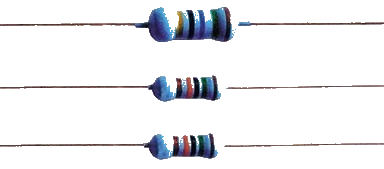How to use thermistor
Source: InternetPublisher:奥特man123 Keywords: thermistor Updated: 2021/01/15
Many people know about thermistors, but how to use them one by one? Thermistors are one of the components, most of which are used for instrument circuit temperature compensation and thermocouple cold-end temperature compensation. The self-heating characteristics of NTC thermistor can be used to realize automatic gain control and form an RC oscillator amplitude stabilizing circuit, delay circuit and protection circuit. When the self-heating temperature is much greater than the ambient temperature, the resistance value is also related to the heat dissipation conditions of the environment. Therefore, this characteristic of the thermistor is often used in velocity meters, flow meters, gas analyzers, and thermal conductivity analysis to make special detection components.

1 Liquid level control
Place two negative temperature coefficient thermistors at safe positions at high and low liquid levels in the container, and apply a fixed heating current. The surface temperature of the thermistor at the bottom immersed in the liquid is the same as the surrounding temperature, while the surface temperature of the thermistor at a high place exposed to the air is higher than the surrounding temperature. If the liquid level submerges the high-level resistor, causing the surface overflow to decrease and the resistance value to increase, the judgment circuit can use the change in resistance value to promptly notify the alarm device, and the action circuit cuts off the liquid inlet pipeline to protect the liquid level. If the liquid level drops to a low level, the bottom thermistor is gradually exposed to the air. At this time, the surface temperature increases and the resistance decreases. The judgment circuit can use the change in resistance to promptly notify the action circuit to open the liquid inlet pipe to supply liquid.
2 Temperature measurement
Thermistors used to measure temperature generally have a simple structure. Due to its large resistance, the contact resistance at the connection can be ignored, and it can be used in long-distance telemetry processes thousands of meters away.
3 Temperature compensation
Negative temperature characteristics can be used to compensate in some electronic devices. When overload causes the current and temperature to increase, the resistance of the thermistor increases the reverse pull-down current, which plays a role in compensation and protection. At this time, it should be noted that the thermistor needs to be connected in series in the electronic circuit.
4 temperature drawing
In electromechanical protection and control, critical point thermistors are often connected in series in the relay control loop. When a certain equipment encounters a sudden failure and is overloaded, the temperature will increase. If the resistance suddenly drops when reaching the critical point, the relay current exceeds the operating current rating and operates to cut off and protect.
5 temperature protection
Thermistors play a very critical role in the function management of some devices, such as wireless phones, notebook computers, etc. If the charging resistance is large, the batteries of these devices will complete charging quickly. But there is also a risk of overheating. If overheating causes the temperature to exceed the Curie temperature of the battery, the battery will be damaged beyond recovery. But if the charging voltage is too low, the battery charging time will be unbearably long. By using a thermistor in the battery, you can detect overheated resistors or battery overheating, thereby adjusting the charging speed. As a result, the battery starts charging at a relatively high voltage, so that it can be quickly charged at a larger charging voltage in a relatively short period of time. When the critical voltage or critical temperature is about to be reached, the charging speed can be controlled to reduce it, and then the charging can be completed relatively smoothly.
6 Overheating protection
For example, notebook computers are getting smaller and smaller, and the motherboard is very sensitive to temperature, and the motherboard is very close to the heating power supply resistor. The continuously increasing CPU frequency not only increases the speed of the CPU, but also makes its working temperature high. In this case, surface mount thermistors can respond quickly, have overheating protection, and are easier to use. The above are some methods of using thermistors, which must be strictly followed during use.
- A very convenient small power supply circuit to share
- Introduction and principle analysis of switching regulated power supply
- Use pulse width modulation to get a precise output voltage
- LED Driver ZD1680
- Detailed explanation of 5v charger circuit diagram
- How to use SBR to improve power conversion efficiency
- Voltage-current converter constructed with XTR110
- LM317 regulated power supply
- Car power 1.5V-12V six-speed converter
- Mc34063 MP3 Switching Charger
- Power circuit of LBO-522 dual trace oscilloscope
- Warm current power supply circuit b
- Simple dual-channel variable DC power supply circuit
- Circuit 2 that uses thermistors to prevent relay contact competition
- One of the circuits that uses thermistors to prevent relay contact competition
- Timing switch AC power circuit
- Super Class A power amplifier power circuit
- audio power circuit
- Low voltage adjustable reference power circuit
- Industrial four-way programmable controller power circuit







 京公网安备 11010802033920号
京公网安备 11010802033920号